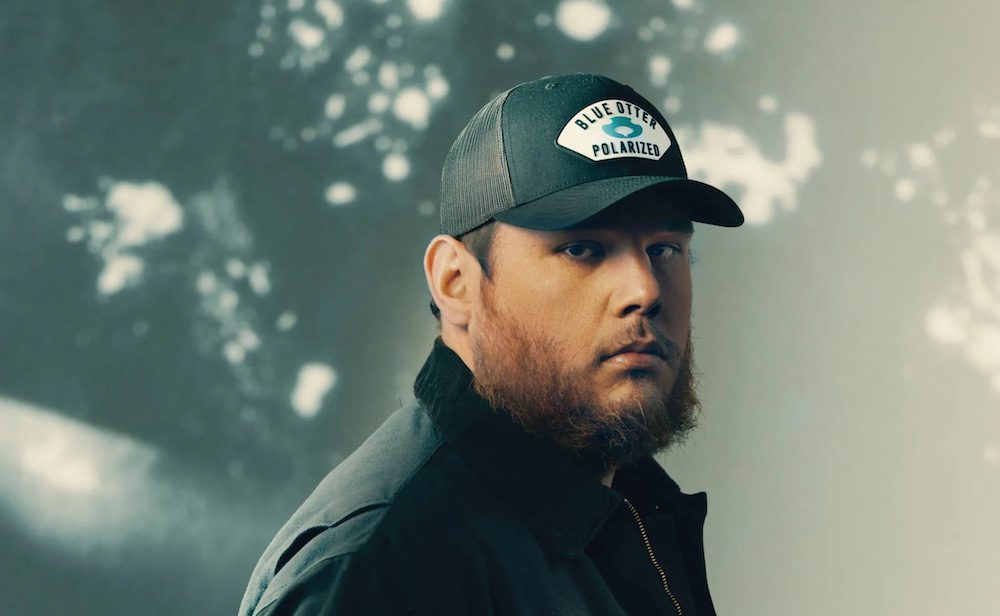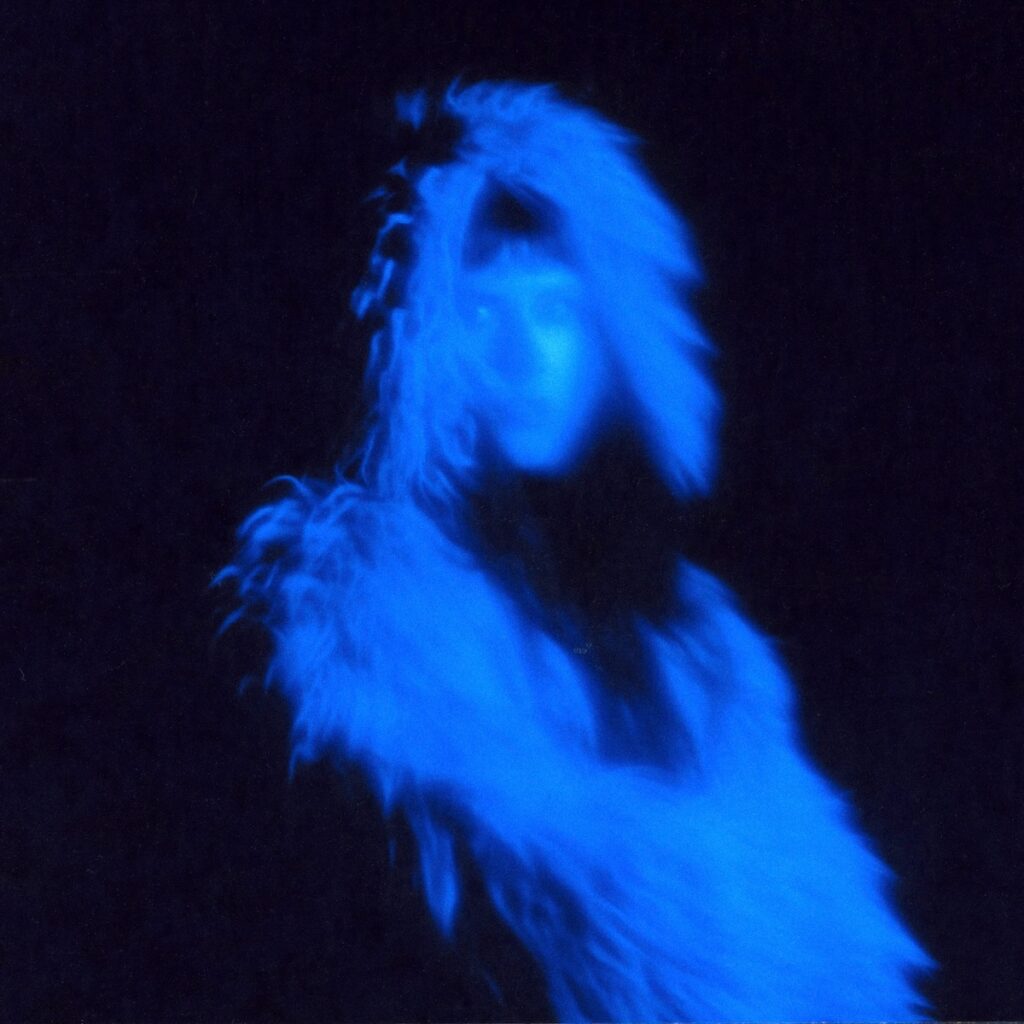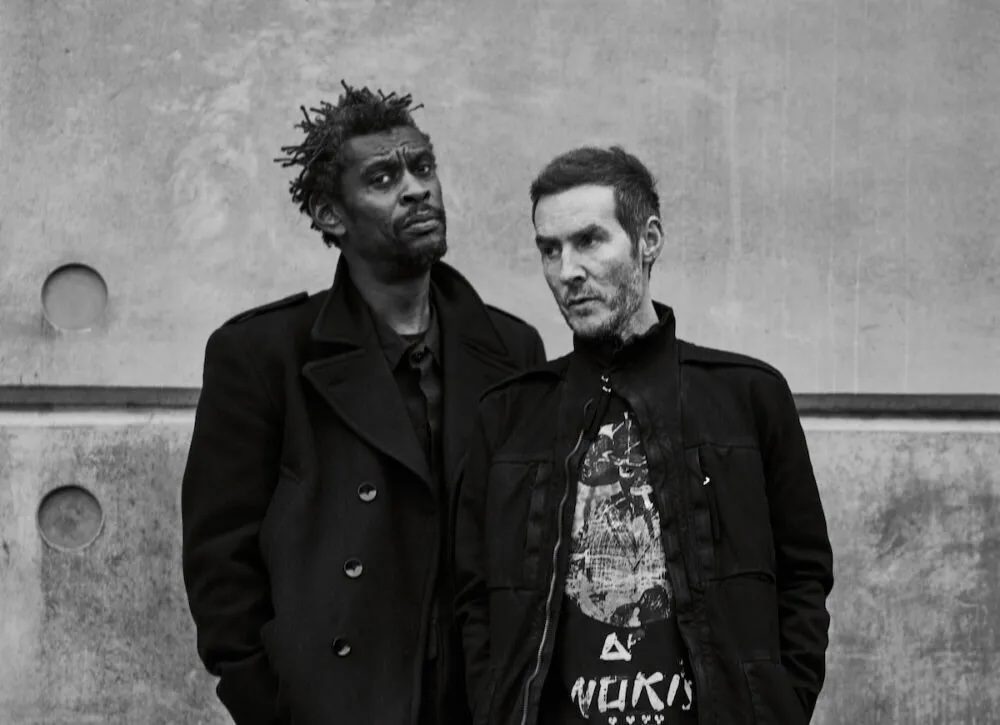
Last summer, I dedicated this column to talking about how a now-historic TV-to-music sync — Kate Bush’s “Running Up That Hill (A Deal With God)” via Stranger Things season four — vaulted the famously camera-shy singer back onto the Billboard charts. That column mainly focused on “bringback culture,” or the instance of an older piece of music re-entering the zeitgeist through a successful screen sync, samples and interpolations, or being meme’d on TikTok. Today, I’m here to talk about a similar phenomenon with a parallel history to “bringback culture”: the cover song, and where it’s at today.
This exercise is inspired by country singer Luke Combs’ reimagining (if you could call it that) of Tracy Chapman’s 1988 folk-rock ballad “Fast Car,” a poignant song about a woman attempting to escape the poverty cycle: “You got a fast car/ I want a ticket to anywhere/ Maybe we make a deal/ Maybe together we can get somewhere/ Any place is better/ Starting from zero got nothing to lose.” Since its release as part of his Gettin’ Old album in March, Combs’ version of “Fast Car” has risen to #1 on Billboard’s Country Songwriters chart (as of June 17), #2 on the Hot Country Songs chart, and #4 on the Hot 100. Combs’ cover out-peaked Chapman’s original, which hit #6 on the Hot 100 in 1988. But since Chapman is credited as the sole writer of “Fast Car,” regardless of who’s singing it, she will reap the financial benefits.
Artists covering artists is nothing new, and that’s a vast understatement. In the early days of the music industry, it was typical practice for different artists to record and release versions of the same song at the same time. From the ’20s to the early ’50s, a set of constantly performed, rerecorded, and reinterpreted songs known as the Great American Songbook circled their way across performing districts such as Broadway, Hollywood, and the New York songwriting/publishing district called Tin Pan Alley. Major songwriters of that era could be the Gershwins, Irving Berlin, Rodgers and Hart, Rodgers and Hammerstein, or Duke Ellington, who handed over their material to stars like Frank Sinatra, Billie Holiday, or Bing Crosby. Or perhaps their compositions would be arranged for stage or studio, or jazz groups would improvise on them.
In the 1930s and ’40s, record labels would release more than one version of a song, which benefited publishers and songwriters more than the artists, who would only get paid for their own versions. For musicians, covering existing hits was an easy way to catch listeners’ ears. Covers remained so prevalent for so long that even the Beatles’ debut album, 1963’s Please Please Me, featured a mixture of Lennon-McCartney originals and cover songs, such as “Twist And Shout” (by Phil Medley and Bert Russell), “Chains” (by Gerry Goffin and Carole King), and “A Taste Of Honey” (by Bobby Scott and Rick Marlow), just to name a few.
Some of the most famous songs ever to exist are covers: Bob Dylan’s “All Along The Watchtower” didn’t chart at first, but when Jimi Hendrix covered it for his 1968 album, Electric Ladyland, it hit #20 on the Hot 100 and became Hendrix’s most successful US single. Most people think of Elvis when the song “Blue Suede Shoes” is brought up, but that one was technically written by rockabilly singer Carl Perkins in 1955. Dolly Parton’s “I Will Always Love You” topped Billboard’s Hot Country songs chart twice — upon its release in 1974 and again in 1982 when Parton rerecorded it for The Best Little Whorehouse In Texas — but that success was overshadowed when Whitney Houston’s cover from 1992’s The Bodyguard spent 14 weeks atop the Hot 100, becoming the best-selling single by a female artist in music history.
By the 1960s and ’70s, young music fans started to regard their faves differently: as auteurs, creative geniuses, what have you. Suddenly, covering other people’s work seemed inauthentic. As Carl Wilson wrote for Slate in 2018: “By the early 1970s, when Dylan, Ringo Starr, and John Lennon alike put out covers albums, whether to patch over a fallow period or just to get back to their roots, they met with hostile critics and lousy sales. Covers? What a rip-off!”
With the exception of genres like soul and country, the ’60s, ’70s, and ’80s popular-music landscape placed a greater emphasis on the singer-songwriter. Covering someone’s work went from an everyday business practice to a special event, a chance for one popular artist to spotlight an obscurity. Meanwhile, as the ’80s gave rise to new practices in hip-hop, rappers traded “covers” for sampling. Even if a popular hip-hop track went crate-digging and looped, say, a soul or disco melody, the verses were always written by the rappers themselves. Hip-hop artists might reference each other or briefly quote another’s words, but rarely did anyone actually cover each other.
The way I see popular covers in the 1990s and beyond is something of a high-low experience. Sometimes you had indie and alternative acts operating on a nostalgia cycle, like on 1994’s Carpenters tribute album If I Were A Carpenter, which featured Sonic Youth, Sheryl Crow, the Cranberries, Matthew Sweet, and Babes In Toyland covering the Carpenters about a decade after Karen Carpenter’s death. On the more mainstream side, you had Sinéad O’Connor going to #1 on the Hot 100 with her version of Prince’s “Nothing Compares 2 U” — this happened in 1990, five years after Prince first wrote and composed it for his side project, the Family.
What are some other major-league covers from the last 30 years? There’s Natalie Imbruglia’s “Torn,” which came out in 1997 but was actually written by Scott Cutler, Anne Preven, and Phil Thornalley and first recorded in 1993 in Danish (renamed “Brændt,” Danish for “Burnt”) by Danish singer Lis Sørensen, then in 1994 by Cutler and Preven’s band Ednaswap, and in 1996 by American-Norwegian singer Trine Rein. In 2001, the collaborative “Lady Marmalade” revamp (Christina Aguilera, Mya, Pink, Missy Elliott, Lil’ Kim) spent five weeks at #1, 26 years after Labelle topped the chart with their disco version in 1974. (The original “Lady Marmalade” was written by Bob Crewe and Kenny Nolan, originally for Nolan’s disco group, the Eleventh Hour.)
In many contemporary cases, a popular artist covering another popular artist’s work was more about reinventing and/or reinterpreting the source material – much like the all-star Moulin Rouge version of “Lady Marmalade,” which layered slick, studio-driven pop spectacle and a lite hip-hop aesthetic. The first artist had a vision, and the second artist uses theirs as a prism through which to break apart and reassemble. Other examples include the Fugees’ updated take on Roberta Flack’s “Killing Me Softly With His Song,” which placed Flack’s chorus over a beat from A Tribe Called Quest’s “Bonita Applebum,” which was sampled from ’60s band Rotary Connection. Jeff Buckley’s transcendent 1994 take on Leonard Cohen’s “Hallelujah” placed more emphasis on the song’s soaring vocal potential, as opposed to the original’s lyrical poetry. When Johnny Cash covered Nine Inch Nails’ “Hurt” eight years after it first came out, the country elder statesman’s version acted as a eulogy for a pain-filled life not yet finished. (Cash would die seven months after releasing “Hurt.”)
The point is, cover songs still happened, but they had to look and sound totally different – or be copied from an overseas artist no one Stateside had ever heard of. There wasn’t much in the way of middle ground, though I’m sure it still existed. It just wasn’t trendy to cover a popular song for the heck of it. There had to be a compelling reason – a movie premiere (a Baz Luhrmann vehicle, perhaps) or a stylistic revamp (say, the Chicks’ harmonized, country update to Fleetwood Mac’s “Landslide”).
Today, I believe it once again is trendy to cover a well-known song for the heck of it. Combs’ “Fast Car” definitely suggests as much. Yes, technically Combs is a country singer, and Tracy Chapman gets slotted under folk/pop, if we’re speaking in record-store/marketing terms. Combs’ “Fast Car” hardly qualifies as a reinterpretation, as it sticks to the original’s acoustic composition, then layers in some pedal steel and bombastic, room-filling drums. Without venturing into Blackface territory, it’s like Combs’ “Fast Car” is merely wearing the skin of Chapman’s “Fast Car.” It’s a cheaply made but easily mass-produced band tee.
I’m not here to argue the quality of Luke Combs’ “Fast Car,” but I do wonder what it signifies. Are we about to see more 1:1 covers like it? This also isn’t entirely a new thing; in 2018, Weezer saw their career rebound on the Hot 100 when they released a yacht-rock-embracing cover of Toto’s “Africa,” on which Weezer sounded more like Toto than Weezer. Theirs hit #51 on the Hot 100 and #1 on the Billboard Alternative Songs chart – Weezer’s first #1 on that chart since “Pork And Beans” in 2008.
As we continue to surf the wave of “bringback culture” (still enhanced by TikTok and the infinite availability of music catalogs via streaming), heavy-duty samples, and interpolations, perhaps it makes sense that the next logical step would be the popularization of full-on 1:1 covers. (If so, then Bruno Mars is about to have a stupendous next few years.) As I was listening to the New York Times Popcast last week, hosts Jon Caramanica and Joe Coscarelli wondered out loud about what, if anything, AI had to do with this, and boy did that click something in my brain.
Caramanica and Coscarelli argue that if we are currently in a “memes and scams and novelty” moment where AI Drake/the Weeknd collabs exist, Grimes is letting people use her voice for AI-generated songs, and fan communities are so hungry for new music from non-prolific artists like Frank Ocean that they just go ahead and generate their own new songs, then perhaps it stands to reason that we’ll be seeing more 1:1 covers peppering the landscape as “human AI.”
“If you had told me that this Luke Combs ‘Fast Car’ cover – the recording of it – was an AI cover, [that’s] totally plausible,” Caramanica says. His take made so much sense to me, I almost dropped my phone when I heard it. At its core, AI doesn’t care for an individual’s experience, which used to be the (ahem) driving force behind covers like Cash’s “Hurt.” All AI wants is to take some human prompts, find and capture what came before, then hit copy/paste. Who knows, if Combs hadn’t covered “Fast Car,” then maybe a Combs fan community would’ve found a way to use his voice to “cover” another song – just because they could.
When seen through that light, and I’m sorry to sound so cynical, Combs’ “Fast Car” looks an awful lot like Sony waving a shiny thing in front of fans to keep them occupied while they figure out what to do about this AI thing, which isn’t going away.
At least Chapman should be getting a nice paycheck out of this.
POP TEN
Doja Cat – “Attention”
It’s not uncommon for pop stars to bite back at fans and the media via song, which is essentially what Doja Cat does on the clear-eyed, Lauryn Hill-esque “Attention” (something about Doja’s video really makes me think of “Everything Is Everything”), which juxtaposes a performer’s need for eyeballs with what happens after they get some. After calling her last two studio albums “cash grabs” and “mediocre pop,” Doja is clearly taking a new level of ownership with her artistry — she certainly has my attention.
Reneé Rapp – Snow Angel
From my vantage point, it still feels like Reneé Rapp is a bit under appreciated, musically speaking. Sure, we know and love her on HBO’s The Sex Lives Of College Girls – also underrated programming. But Rapp’s got a hell of a set of pipes, and her wailing pop persona is starkly different from the buttoned-up character she plays on Sex Lives. Led by a sprinkle of piano plinks, “Snow Angel” builds with blaring guitar stabs, seemingly taking influence from glam-rock high drama.
Cian Ducrot – Heaven
Rising Irish singer Cian Ducrot has a heartfelt arena-filler with “Heaven,” a tribute to his brother. That’s sweet and even a little unexpected, in a Frozen sort of way. Musically, Ducrot takes clear cues from late-career Coldplay, Ed Sheeran (whom he has supported on tour), and even a tinge of Nashville country-pop. I mostly dislike two out of these three things – late-career Coldplay and Sheeran writ large – but Ducrot really sells it. I can’t quite explain why I like “Heaven,” but I do.
Saucy Santana – “Whole Family” (Feat. Flo Milli)
“Whole Family” has it all: a punchy sample of the Sugarhill Gang’s “Apache,” cheeky-fun lyrics referencing Will Smith (who has a Fresh Prince history with “Apache”), a memorable guest spot from Flo Milli, who sounds right at home in Saucy’s family. Not only is this a must-have for any Pride celebration, it’s got real Song Of Summer energy, too.
Victoria Monét – “On My Mama”
Speaking of queer jams, Victoria Monét’s “On My Mama” cleverly interpolates Chalie Boy’s “I Look Good” to create a sultry, slinky R&B shuffle that is as much about loving yourself as it is for loving anyone you damn please.
Willie Jones – “Lil Vibe”
Shreveport’s Willie Jones is a welcome addition to the pop-country milieu — I love the way he weaves in a rhythmic Caribbean sway on the genre-surfing “Lil Vibe.”
Kiana Ledé & Khalid – “Where You Go”
Kiana Ledé and Khalid achieve minor-key nirvana on the pleading refrain of “Where You Go,” which speaks to a romantic soul connection: “Whenever you’re cold I’m shivering/ Whenever you’re stoned I’m hovering/ It’s like whenever you’re gone I’m losing it/ Like, baby, I go where you go.”
Leigh-Anne – “Don’t Say Love”
Ex-Little Mix-er Leigh-Anne has a certified bop with “Don’t Say Love,” which I was surprised to find out is actually her debut solo single. Over urgent strings and a fast-paced electronic beat, Leigh-Anne makes “Don’t Say Love” her own with soaring vocals, throwback visuals (the video is giving Aaliyah and TLC), and endless charisma.
WALWIN – “Daydrinker”
London singer WALWIN describes his work as “MySpace Music for Elder Emos and Gen Zemos,” and I don’t quite know if I should start digging my own grave or jump on the WALWIN bandwagon. I’ll opt for the latter, because damnit if WALWIN doesn’t curl his words just right as crunchy guitar chords blast in the background. Even more fascinating: WALWIN is actually an elder emo — it’s not just a shirt he wears. He was 28 in 2019, which would make him a 30-something today! Love to see someone successfully bridging the generation gap.
Flyana Boss – “You Wish”
For the uninitiated, Flyana Boss are a duo from Detroit and Dallas — classically trained musicians “repping the vagina dynasty,” and with a descriptor like that, you can bet they have my attention. “You Wish” is stupidly catchy, exploding with sass and attitude, plus no shortage of quippy lyrics (“Hello Christ?/ I’m ‘bout to sin again”) that name-drop everyone from Danny Glover, Nicki Minaj, Michael Phelps, and Dr. Evil.



